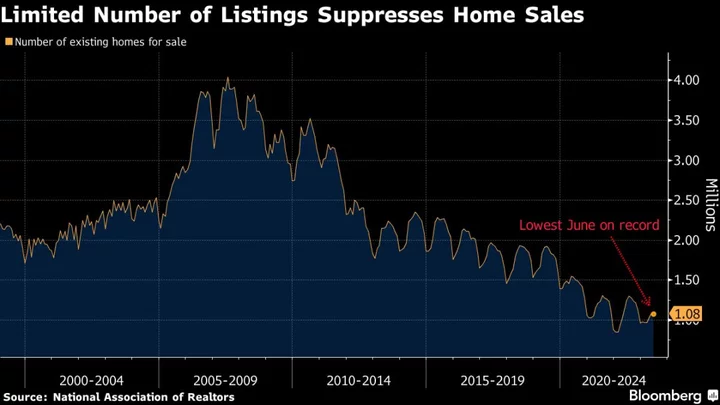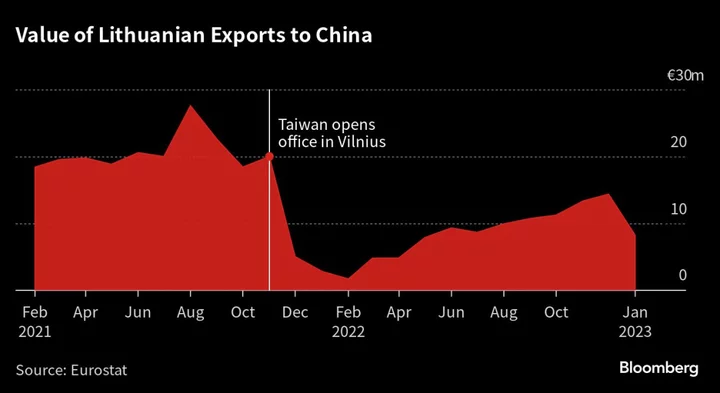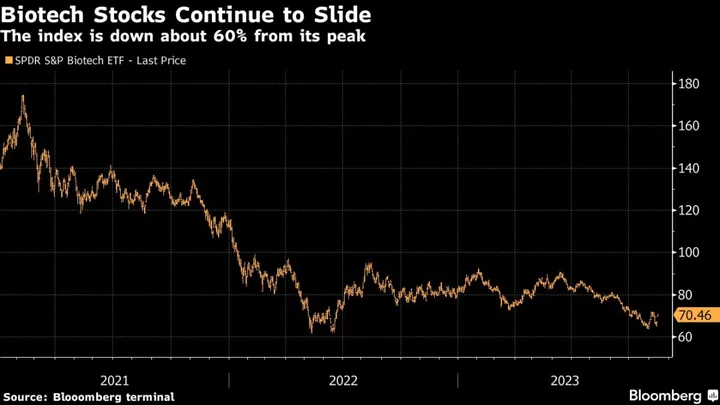Home prices are again on the rise after a brief dip last year, complicating the Federal Reserve’s effort to contain inflation and raising questions about how much further policymakers will have to hike interest rates.
Demand for homes around the country continues to outpace supply, despite a rapid rise in borrowing costs spurred by the US central bank. While signs of easing price pressures have some policymakers eyeing the end of their tightening campaign, they could end up having to increase rates higher or hold them there for longer if the resilient housing market leads to slower progress on inflation, economists and Fed officials say.
“If housing begins to recover more meaningfully, that raises the risk that inflation is going to be more sticky,” said Torsten Slok, chief economist for Apollo Global Management. “The real risk here is, meaning from a markets perspective, that the Fed has to step harder on the brakes.”
Policymakers are poised to lift rates by a quarter point following a two-day policy meeting Wednesday, bringing the target on their benchmark rate to a range of 5.25% to 5.5%. Projections released by Fed officials in June showed most of them foresee at least one more rate hike by year end.
Inflation is cooling after soaring to a 40-year high last summer, with the consumer price index rising by 3% in the 12 months ending in June, one-third of the rate seen a year ago. But so-called core measures of inflation, which strip out volatile food and energy prices, are proving more stubborn and leading to worries that it could take some time to bring price gains down to the Fed’s 2% goal.
Shelter costs, which account for roughly 40% of the core CPI basket, are an important part of that battle.
The Bureau of Labor Statistics, which calculates the CPI, mainly measures shelter through the cost of rent, including what renters pay each month and an estimate of what a home owner would be paying if they rented out a similar place. Rising home values can push up rents over time, as landlords factor in what they could receive if they sold the property.
Since rents are typically updated about once a year, changes in home prices and rents trickle into the official inflation metrics with a lag. The home price declines seen last year, combined with a cooling in rental costs, are now contributing to a drop in shelter inflation and overall price gains.
But a resurgence in home prices could slow that progress and potentially lead to more persistent inflation next year.
“The housing market even looks like it may have bottomed out,” Dallas Fed President Lorie Logan said earlier this month at a conference in New York. “While housing inflation will likely continue to soften in the near term as a result of progress on rents last year, a rebound in housing would pose an upside risk to inflation down the road.”
Tight Inventory
A key driver of the rebound in prices is a stark shortage in housing supply. There were 1.08 million homes for sale last month, the lowest June inventory on record, according to the National Association of Realtors.
Inventory is low in part because many homeowners who locked in lower mortgage rates early in the pandemic are reluctant to give them up by listing their homes for sale. The shortage is depressing sales of previously owned homes, which fell to a five-month low in June.
Read More: US Home Resales Fall to Five-Month Low, Keep Prices Near Record
But it is also pushing up prices, as buyers battle over the homes that do get listed.
The median home sale price in the four weeks ending July 16 was $382,500, up 2% from a year earlier, according to Redfin. Prices rose more sharply in some cities, including a 12% increase in Milwaukee, a 10% rise in Miami and a 9.5% bump in Cincinnati.
“The drag from higher rates on housing kind of seems to have come and gone,” said Veronica Clark, an economist for Citigroup. “That is, I think, a bit of a lesson in that we haven’t slowed activity enough to bring the underlying pace of inflation back to something close to 2%.”
Andres Rodriguez, a real estate broker in the Miami area, said higher mortgage rates have taken off some of the heat in the housing market, but demand is still steady among people who are buying out of “necessity” because of growing families and new jobs.
The most desirable homes still get close to 10 offers each, he said, though down from more than 20 offers that was common two years ago. Those offers usually come in at or slightly below asking price, versus the offers that previously came in tens of thousands of dollars above asking.
“Even though interest rates have risen so much, we have super high demand,” said Rodriguez.
A sudden downturn in economic growth or the labor market could dampen that demand, cooling the housing market and inflation overall. Policymakers may also get some help from rental prices, which have been flat or down over the past year and which are the main way that living costs are measured in inflation metrics.
There are about 1 million new rental units under construction, which could lower rents and counter some of the upward pressure from higher home prices, said Robert Dietz, chief economist for the National Association of Home Builders.
“The bad news is that the Federal Reserve really can’t control housing supply,” said Dietz.
--With assistance from Vince Golle and Ana Monteiro.









